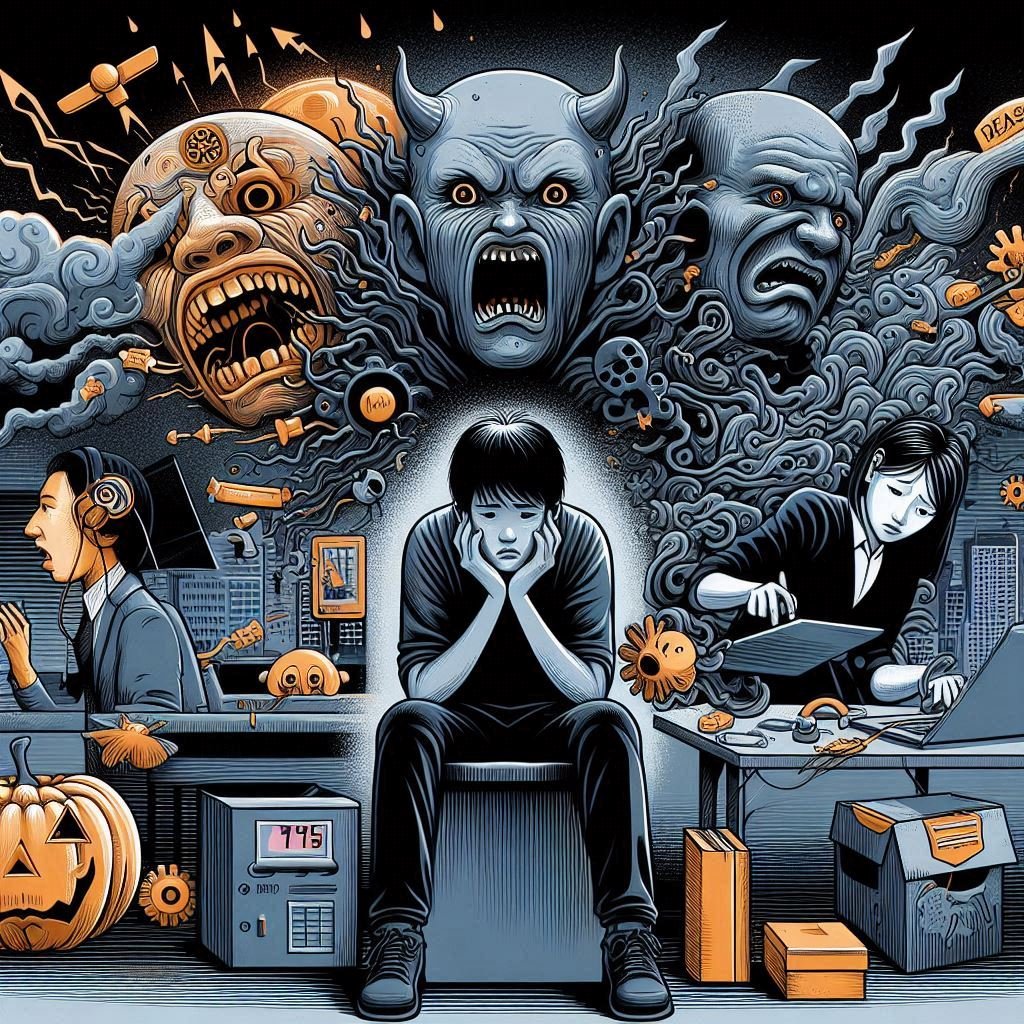
Understanding Emotional Triggers: The Foundation of Healing
An emotional trigger is a reaction that is disproportionate to the present situation, often stemming from a past experience or unprocessed emotion. The pain you experience in the present moment is often a reflection of unresolved emotions buried deep within you. It’s essential to acknowledge that triggers don’t define you, and they don’t have to hold power over your emotions and life. Healing is possible—and it begins with understanding your unique emotional patterns.
1. The Ancient Art of Emotional Alchemy: Transmuting Negative Energy
The concept of alchemy in ancient philosophy was about transforming base metals into gold. Similarly, emotional alchemy is the process of transforming negative, stagnant emotional energy into something positive. This process involves reframing negative emotions as opportunities for personal growth and self-discovery.
How to Apply:
- Self-Observation: The first step in emotional alchemy is to observe your emotional responses without judgment. When a trigger arises, notice the thoughts and feelings associated with it.
- Empowerment through Questions: Ask yourself questions like, “What is this emotion trying to teach me?” or “How can I use this experience for personal growth?”
- Visualization: Use visualization to transform your negative emotion into light or gold. Imagine the pain dissolving and being replaced by a sense of calm and clarity. This practice reprograms your mind to perceive emotional triggers as opportunities for transformation.
By viewing emotional triggers through the lens of emotional alchemy, you shift your focus from emotional pain to emotional growth, which helps you break free from their control.
2. Modern Neuroplasticity: Rewiring Your Emotional Brain
Neuroplasticity, a breakthrough discovery in neuroscience, reveals that the brain has an incredible ability to rewire itself and form new connections throughout life. This means that even the most deeply ingrained emotional triggers can be changed. By learning how to reprogram your brain’s response to emotional stress, you can create healthier, more balanced reactions over time.
How to Apply:
- Create New Patterns: When you experience an emotional trigger, consciously replace your old reaction with a new, healthier response. The more you practice, the stronger the new neural pathway becomes.
- Mindfulness and Affirmations: Use mindfulness to create awareness of your emotional triggers. Pair this practice with positive affirmations, such as “I am in control of my emotions,” to strengthen new thought patterns.
- Neurofeedback: Advanced neurofeedback technology allows you to train your brain to reduce stress responses and enhance emotional regulation. By reinforcing new brainwave patterns, neurofeedback helps you remain calm and composed in situations that would otherwise trigger strong emotional reactions.
Through neuroplasticity, you can gradually change your emotional responses, allowing you to respond to life’s challenges with greater resilience.Get Discount at Hostinger domain and webhosting
3. The Power of Sound Healing: Vibration Therapy for Emotional Release
Sound has been used as a healing tool for centuries. Ancient cultures used vibrations from instruments like gongs, singing bowls, and chants to balance energy and promote healing. The modern use of sound healing, through practices like binaural beats and solfeggio frequencies, can be incredibly effective in releasing emotional tension and promoting emotional well-being.
How to Apply:
- Binaural Beats: These soundtracks use two different frequencies to stimulate brainwave activity that encourages relaxation, emotional release, and healing. Try listening to binaural beats designed for emotional healing or stress reduction.
- Tuning Forks or Singing Bowls: Instruments like Tibetan singing bowls or crystal tuning forks resonate at frequencies that promote emotional release. You can use them to clear blocked emotional energy and foster a deep sense of inner peace.
- Solfeggio Frequencies: These ancient healing frequencies are believed to restore emotional balance. For instance, the frequency of 528 Hz is associated with love and transformation, making it ideal for healing emotional wounds.
Integrating sound therapy into your emotional healing practice offers a deep, relaxing way to release emotional triggers and promote balance in your life.
4. Emotional Freedom Technique (EFT): Tapping Into Healing
Emotional Freedom Technique (EFT), also known as tapping, is a modern method that combines elements of cognitive therapy and acupressure. By tapping on specific acupressure points on the body while focusing on a negative emotion or trigger, you can release emotional blockages and create a sense of emotional freedom.
How to Apply:
- Identify Your Trigger: When a trigger arises, pinpoint the emotion you’re feeling and rate its intensity on a scale from 0 to 10.
- Tap on Key Acupressure Points: Gently tap on specific points on your body (such as the top of your head, eyebrows, under the eyes, and collarbone) while repeating a phrase like, “Even though I feel [emotion], I deeply and completely accept myself.”
- Evaluate the Intensity: After several rounds of tapping, assess the intensity of your emotion. If the intensity decreases, you know you’ve successfully released some emotional charge.
EFT is an accessible and effective method for healing emotional triggers, and it can be practiced anywhere, anytime.
5. The Tao of Emotional Harmony: Integrating Yin and Yang for Balance
Taoism teaches that everything in life operates through a balance of opposing forces, known as Yin and Yang. Emotional imbalance often occurs when one force dominates. By cultivating a balanced approach to your emotions, you can harmonize your internal energies and reduce the impact of emotional triggers.
How to Apply:
- Mindfulness and Meditation: Engage in daily mindfulness practices or Taoist meditation to achieve a peaceful state of mind. This practice helps you become more aware of your emotional reactions and create space between your triggers and your response.
- Acceptance of Duality: Understand that both positive and negative emotions are essential parts of the human experience. By embracing the full spectrum of emotions, you create harmony and reduce emotional imbalance.
- Tai Chi or Qi Gong: These ancient practices focus on the flow of energy (Qi) within the body, helping to release stagnant emotional energy and restore balance. Integrating these practices into your daily routine can significantly reduce the impact of emotional triggers.
By embracing Taoist principles of balance and harmony, you’ll begin to see emotional triggers as an opportunity to restore equilibrium within yourself.
6. Islamic Healing: Spiritual Practices for Emotional and Mental Well-Being
In Islam, emotional healing is deeply connected to spiritual practices and a profound connection with God (Allah). Islamic healing techniques emphasize the importance of prayer (Salat), remembrance of God (Dhikr), and trust in divine wisdom as tools for emotional resilience.
How to Apply:
- Recitation of Qur’anic Verses: The Qur’an offers healing for both the body and soul. Verses such as Surah Al-Fatiha (The Opening), Surah Al-Baqarah (2:286), and Surah At-Tawbah (9:51) are believed to help calm the heart and mind, offering divine guidance and relief from anxiety and emotional pain.
- Dhikr (Remembrance of Allah): Repeating specific praises of God, such as “SubhanAllah” (Glory be to God), “Alhamdulillah” (Praise be to God), and “Allahu Akbar” (God is the Greatest), creates a spiritual atmosphere that soothes emotional distress. This practice helps bring peace and clarity to the mind, allowing one to approach life’s challenges with faith and patience.
- Istikhara (Seeking Guidance): When faced with difficult decisions or overwhelming emotions, seeking guidance through Istikhara prayer helps to align the heart with divine will, offering peace and clarity in times of confusion.
- Tawakkul (Trust in God): Cultivating the belief that everything happens by the will of Allah and trusting that challenges are part of divine wisdom helps reduce anxiety and fosters inner peace. By surrendering your worries to God, you lighten your emotional burdens and build spiritual resilience.
Islamic practices help harmonize the soul with the divine will, offering both spiritual and emotional healing in times of distress.
Conclusion
Unlocking your unique key to heal emotional triggers is a journey of self-discovery, healing, and empowerment. By combining ancient practices like emotional alchemy and Taoist teachings with modern techniques like neuroplasticity, sound healing, and EFT, alongside the spiritual wisdom found in Islam, you can begin to transform your emotional landscape. Healing emotional triggers is not a quick fix, but with dedication and practice, you can break free from the cycles that have held you back, reclaim your emotional balance, and grow into the best version of yourself.
Remember, you hold the key to your own healing. It’s time to unlock it and begin your transformation today.



Great information shared.. really enjoyed reading this post thank you author for sharing this post .. appreciated